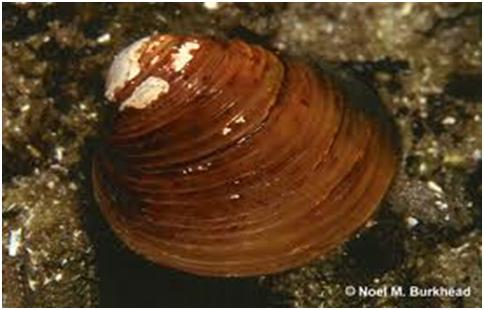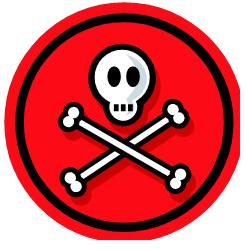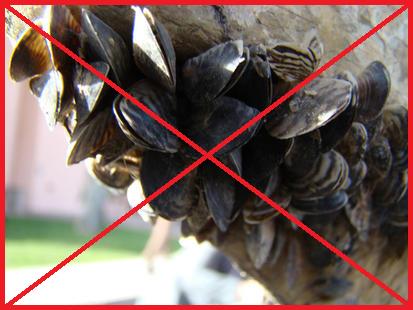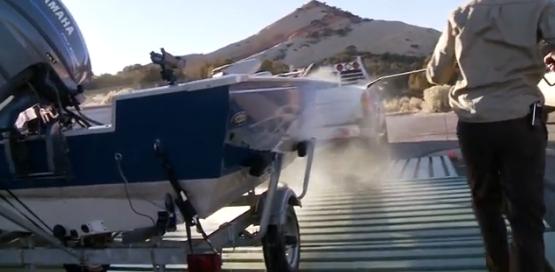UPCOMING EVENTS
View full calendarInvasive Species

Natural barriers that isolate species and prevent them from spreading to new regions:
- Geographic barriers - mountain ranges, oceans, wide rivers.
- Survival and establishment barriers - water temperature, pH, salinity.

Why care about invasive species?
Invasive species can:
- Displace or otherwise harm native species
- Alter ecosystem processes
- Reduce biodiversity
- Cause illnesses in animals and humans
- Cause severe economic impacts
- Reduce property values

Human activities that may introduce or perpetuate the spread of invasive species:
- Illegal fish stocking - Illegally introducing a non-native fish into a water body.
- Legal fish stocking - legally introducing a non-native fish into a water body, usually for recreational fishing, or for population controls on other fish.
- Ships and boats - Ballast water is used to stabilize ships. This water often uptakes organisms, carrying them from one place to another. It has been estimated that more than 3,000 species of animals and plants are transported daily around the world in ballast water.Hull fouling is what happens when aquatic organisms attach to the ship.
- Improperly cleaned equipment from fieldwork or recreational activities can unintentionally spread invasive species on the equipment that is used.
Aquatic invasive species specifically can:
- Reduce fish populations
- Ruin boat engines
- Jam steering equipment
- Make lakes and rivers unusable for boaters and swimmers
- Increase operating costs of drinking water plants, power plants, dam maintenance, and industrial processes
- Reduce native species
- Degrade ecosystems
Interesting Facts:
 Invasive species are the second leading cause of species extinction and loss of biodiversity
in aquatic habitats throughout the word.
Invasive species are the second leading cause of species extinction and loss of biodiversity
in aquatic habitats throughout the word.
 In the eastern US experts estimate that mussels cost power and water industries 5
billion dollars every year. Companies must pay to remove mussels from clogged filters,
pipes, and water delivery systems.
In the eastern US experts estimate that mussels cost power and water industries 5
billion dollars every year. Companies must pay to remove mussels from clogged filters,
pipes, and water delivery systems.
 Tamarisk has displaced native vegetation (e.g., cottonwoods, willows) on approximately
1.6 million acres of land in the Western United States and is still spreading. Tamarisk
grows in dense thickets and can take up 200 gallons of water each day. The west is
losing anywhere from 2 to 4.5 million acre-feet of water each year due to this invasive
species.
Tamarisk has displaced native vegetation (e.g., cottonwoods, willows) on approximately
1.6 million acres of land in the Western United States and is still spreading. Tamarisk
grows in dense thickets and can take up 200 gallons of water each day. The west is
losing anywhere from 2 to 4.5 million acre-feet of water each year due to this invasive
species.
How do invasive species affect water quality?
 Cheatgrass Bromus tectorum (shown above) covers millions of acres in the western United States. Cheat grass
burns easily and increases the risk of fires. This in turn increases fire-related
impacts on natural waters from heavily burned watersheds.
Cheatgrass Bromus tectorum (shown above) covers millions of acres in the western United States. Cheat grass
burns easily and increases the risk of fires. This in turn increases fire-related
impacts on natural waters from heavily burned watersheds.
 Common Carp Cyprinus carpio (shown above) feeds by searching through underwater vegetation. This feeding habit
uproots plants which muddies the water. This makes it hard for other fish to see and
destroys the food and cover for other fish.
Common Carp Cyprinus carpio (shown above) feeds by searching through underwater vegetation. This feeding habit
uproots plants which muddies the water. This makes it hard for other fish to see and
destroys the food and cover for other fish.
 Pepperweed Lepidium latifolium(shown above) invades riparian zones, salt marshes and other habitats in the western United States. It can interfere with
the regeneration of cottonwoods and willow, which are two important native species
in western stream corridors.
Pepperweed Lepidium latifolium(shown above) invades riparian zones, salt marshes and other habitats in the western United States. It can interfere with
the regeneration of cottonwoods and willow, which are two important native species
in western stream corridors.
Tips to stop the spread of invasive species
Spread the word, not the invasive species
 Control of invasive species can be extremely difficult once they are established.
The cost to prevent, monitor, and control invasive species is huge. Prevention is
far better and less expensive than control so let's work to keep them out!
Control of invasive species can be extremely difficult once they are established.
The cost to prevent, monitor, and control invasive species is huge. Prevention is
far better and less expensive than control so let's work to keep them out!
Informing the public by local, state, tribal, and federal agencies can be expensive, time consuming, and sometimes even intrusive, especially when people are trying to enjoy being outside. By telling just one other person, like a neighbor or friend, you can help raise awareness and protect our water.
When you are buying plants for your yard or garden make sure they are not invasive species. Replace invasive species with non-invasive plants. Contact your local nursery for more information.
Don't release aquarium fish, live bait, or other exotic animals, or plants, into the wild. If you plan on owning an exotic pet, please do your research before committing to take care of it.
Clean your boots, bags, and any other equipment after hiking or backpacking and throw away food before you travel to different places.
Boats/WatercraftPlease fill out a certification form when you do this process. |
|
|
All you need to do is Clean, Drain and Dry! Clean any aquatic vegetation, mud and debris off of your boat and equipment. Drain all of the water out of the boat (including live wells and ballast tanks). Make sure you lower the motor on your boat all the way in order to drain it. Leave hatches open to dry. Set anything that may have come in contact with the water out to dry (e.g., life jackets, ropes, anchors, inflatable toys). Dry your boat for at least:
Don't want to wait that long? Have a professional decontamination done. Professional decontamination uses 140 degree water with no soaps or chemicals. To find a professional decontamination station near you call: Northern Utah 801-648-6315 Northeastern Utah 435-790-8938 Central Utah 435-503-4066 Southern Utah 435-691-2427 Southeastern Utah 435-630-3132 |
  |
More Information:
Aquatic Invasion! (lesson plan for 6th-10th graders)
Utah Invasive Species List (Feb. 2011)
Invasive Mussels video by the Utah Division of Wildlife Resources
